Angel of the Canary Islands
Although they grow to be 2.5 metres long, angel sharks are notoriously difficult to spot. They are flat, perfectly camouflaged – and also rare. Eva aims to learn about one of the few remaining populations of these enigmatic creatures.
When I was a kid my greatest nightmare was being the only survivor of a plane crash in the ocean and being eaten by a shark. What a crazy fear to have. I did not grow up near the ocean and I did not have much to do with marine life. In fact, I was born in Germany and grew up in Bolivia, in the middle of the Andes, far away from the sea. I never thought I would work as a marine scientist. I was more of an artist, a creative person, but I always loved nature. When we...
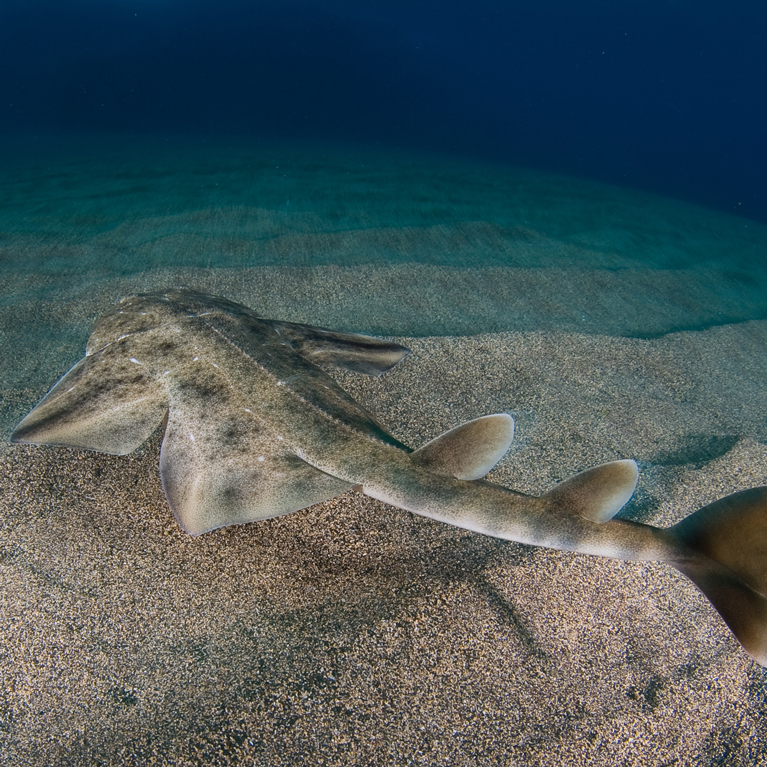
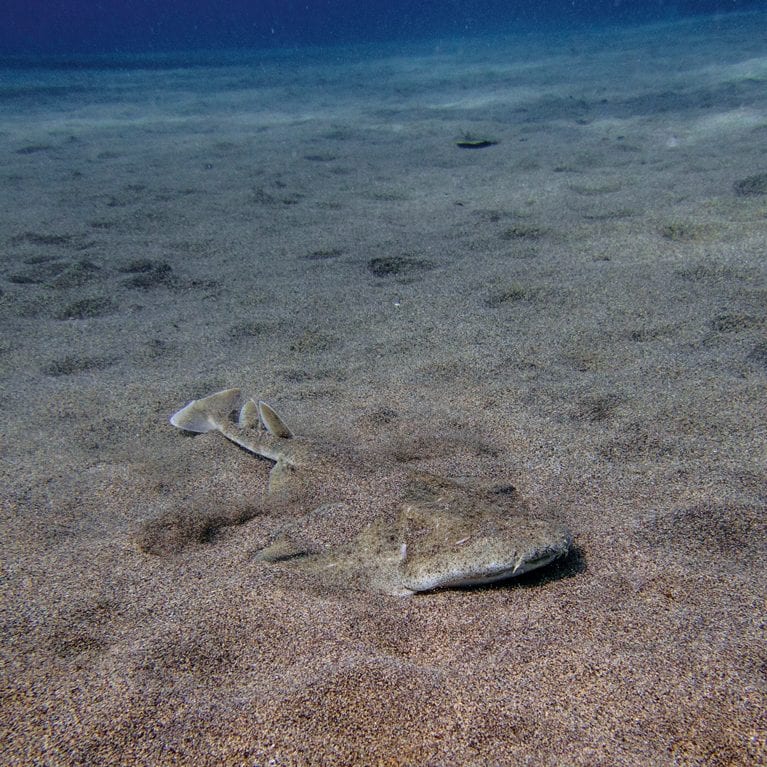
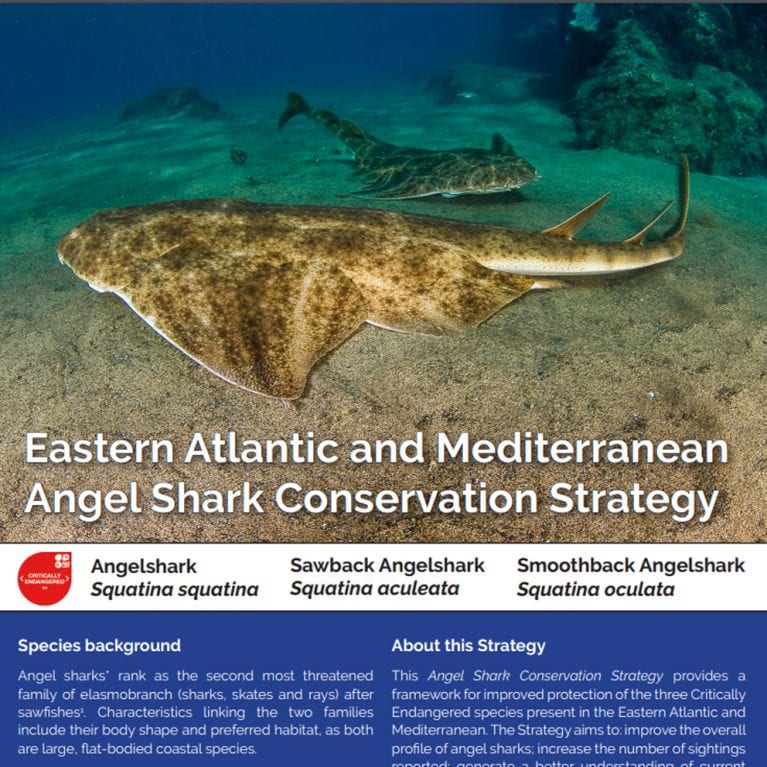
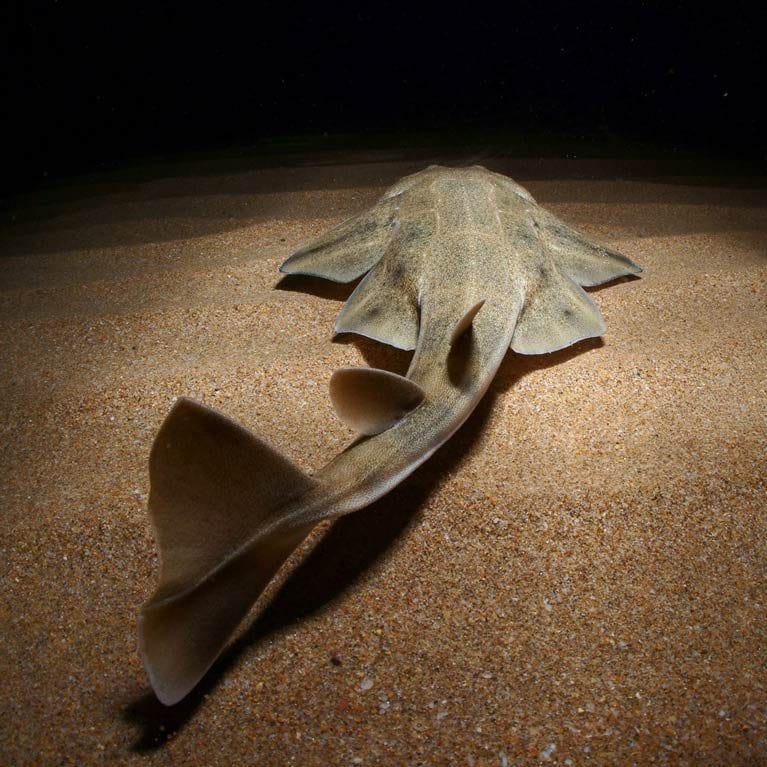
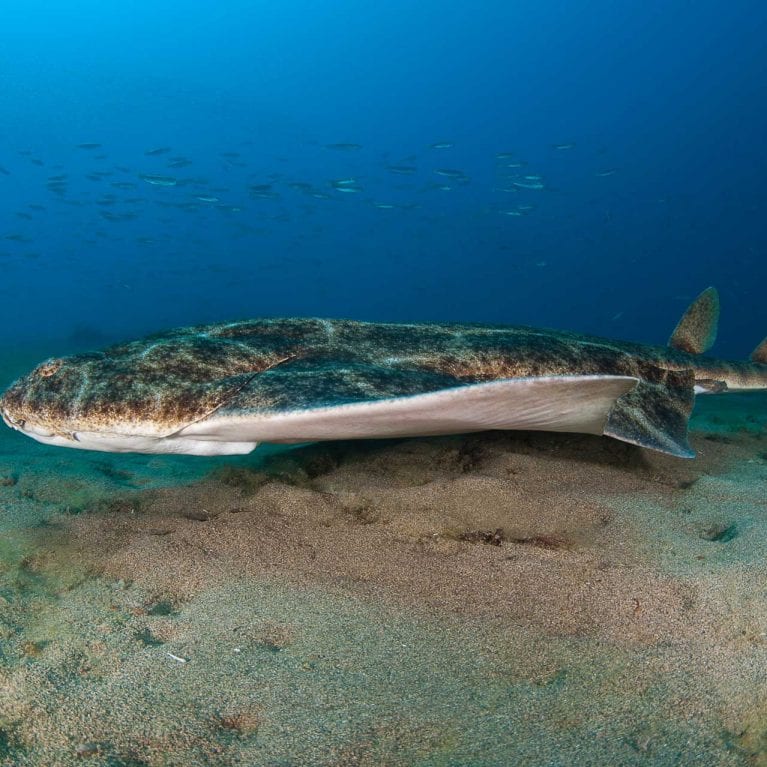
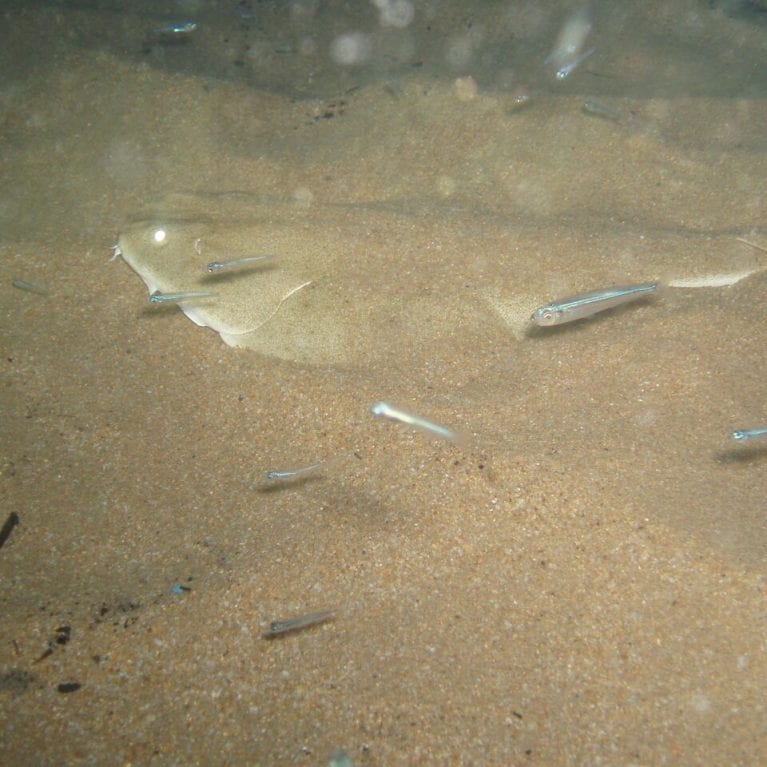
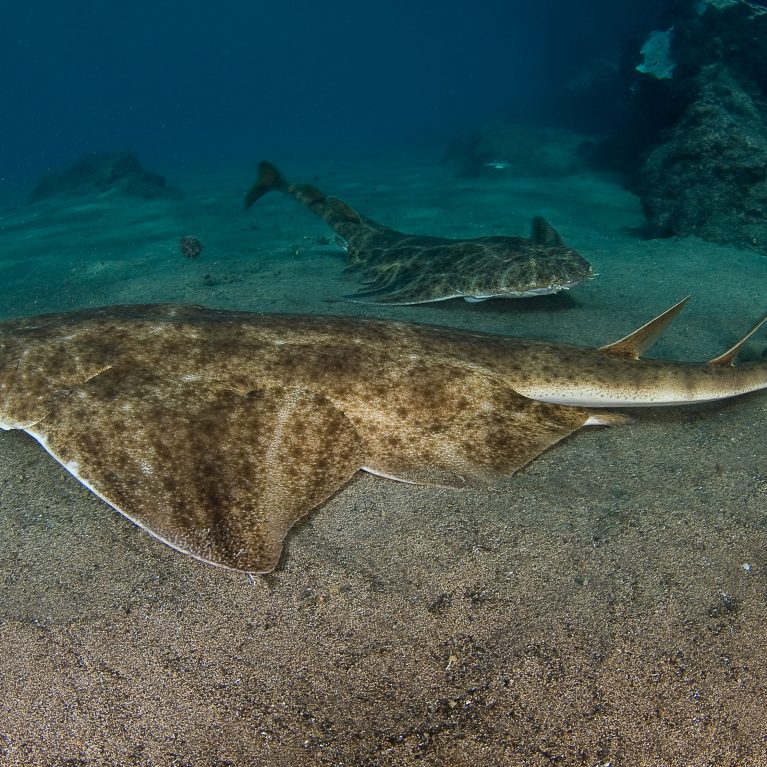
Angel shark project: ecology and distribution in the Canary Islands
The key objective of this project is to assess the conservation status of the angel shark Squatina squatina in the Canary Islands by engaging local recreational divers as a source of data. This information should guide future decisions to overcome the main threats this species faces and guide the implementation of effective conservation measures.
Overfishing and high by-catch rates have severely depleted many shark species, including the angel shark. Due to its sensitive biology, the angel shark has a very slow rate of recovery and has therefore been included as Critically Endangered on the IUCN Red List in 2006. Across its distribution range, the angel shark has been extirpated from many places. Urgent conservation policies require baseline data, including information on the species’ basic ecology and distribution patterns. By taking advantage of the last healthy population of this species worldwide, i.e., those located in the Canary Islands, this project represents a unique opportunity to gain basic ecological knowledge about the angel shark.
The Canary Islands are a unique hotspot in the world where angel sharks seem to have large and stable populations. Nevertheless, these populations face threats such as mortality related to sport fishing and capture by illegal artisanal fisheries. Angel sharks are also an important attraction for the area’s expanding recreational diving tourist industry. Unfortunately, this has concurrently caused an increase in disturbance of the species by recreational divers. Recreational divers, however, also represent a large community of skilled volunteers that can help to increase scientific knowledge about species, such as the angel shark, which are commonly encountered at accessible depths. This source of information has proven to be valuable in numerous elasmobranch studies.
In April 2014, the University of Las Palmas de Gran Canaria launched a citizen science tool, ePOSEIDON (www.programaposeidon.eu), to monitor marine species in the Canary Islands via an online database. Using this tool, the Angel Shark Project has identified areas of species distribution and aggregation sites across the entire archipelago. Preliminary results have shown that angel sharks have a wider distribution in the archipelago than previously thought. Consequently, the need for more information on the species’ basic ecology, abundance and migratory patterns is essential to assess its conservation status and to implement future management strategies for this species.
This project will use the ePOSEIDON database, coupled with a shark-tagging programme, to further engage the diving community in registering sightings of tagged angel sharks. As a result, this combination of available tools will be a cost-effective method involving local recreational divers in science and raising awareness within the community. The outcomes of this programme will be a pivotal for monitoring trends in the species’ distribution and abundance over large spatial and temporal scales.
The aims and objectives of this project are to:
- Determine the distribution, aggregation sites and breeding patterns of the angel shark across the Canary Islands using an online database tool.
- Assess the population abundance and structure of this species in the Canary Islands.
- Identify residency and movement patterns within and between islands via a cost-effective tagging program.
- Raise public awareness using media platforms to disseminate information within the recreational diving and sport-fishing community about the necessity of avoiding disturbance of this shark species.”
Summary of main research results/outcomes
1. Angelshark displayed spatial (vertical and horizontal) and temporal segregation by size and sex.
2. Nursery areas: Two confirmed nursery areas (one of them the largest known nursery area), 13 potential nursery areas.
3. Other Critical Areas: Acoustic telemetry data revealed significant sex differences in Squatina squatina distribution and space use across both seasonal and diurnal timescales in Spain’s largest Marine Reserve: La Graciosa.
4. Genetics: Significant differentiation of angelsharks between islands in the archipelago, with three main genetic units at: (1) Tenerife, (2) Gran Canaria and (3) a third one that included La Graciosa, Lanzarote and Fuerteventura. Our results imply a connectivity barrier between some adjacent islands, most likely driven by abyssal depths, and varying geological history and oceanographic patterns.
Conservation achievements
In 2016, the ASP partnered with the IUCN SSC Shark Specialist Group, the Shark Trust and the marine conservation organisation SUBMON to devise a 10-year action plan designed to ensure a coordinated approach to conserve angelsharks in the archipelago – the first such plan for this species. The action plan was developed with input from a range of local and international stakeholders, including divers, scientists and conservationists, as well as representatives from the governments of the Canary Islands and Spain, all of whom attended a joint workshop in Las Palmas de Gran Canaria. The Angel Shark Action Plan was released in December 2016 and can be found here. The vision of this plan is that Angelsharks in the Canary Islands should be abundant and protected in their unique stronghold.
The Angel Shark Conservation Network (ASCN) was formally established with a website and regular bulletins. This has been achieved thanks to the financial support of SOSF, but contacts and the content have been available thanks to the efforts of this project and various partner organizations. The ASCN produced the Eastern Atlantic and Mediterranean Conservation Strategy, which has been published in 2017, following a workshop that was held back-to-back with the European Elasmobranch Association (EEA) meeting in Bristol in 20216. The strategy can be found here. The ASP played a key role in the development of this strategy.
We have also submitted a listing proposal to the Spanish Government to include angelsharks in the National Catalogue in 2018 and another proposal of protection measures for angelsharks in the Natura 2000 Special Areas of Conservation. Although the Spanish Government confirmed that all three species of angel shark will be listed on Spanish Endangered Species List in January 2018, there were significant delays in adopting this into Spanish law. Finally, on 6 June 2019 angel sharks were listed as “in danger of extinction” on the Spanish Endangered Species List. One outcome of this national protection is that the CI Government is obligated to develop a Recovery Plan (RP), listing specific measures and identify critical areas to improve species status. In 2021 ASP were contracted by the CI Government to lead on developing the RP. They agreed with our suggestion of including stakeholders in the development and felt the ASP team were best-placed to lead on this work given the relationships built with divers and fishers, supported by SOSF, over the last years. It is currently with the Ministry of Environment and will soon be launched for public consultation in Spain, before getting formally adopted. All the data gathered from the ASP, was used to map critical areas and help shape the measures that are proposed in the RP.
In addition to driving this legislative change, the ASP:CI team have met with government officials in the Canary Islands and Spain on >20 occasions to talk about different elements of the project and how to cascade the Spanish Endangered Species Listing to Canary Island specific law. The team also attended Government-led meetings on marine spatial planning for Natura 2000 sites in the archipelago.
Furthermore, we have contributed to the proposal to list Angelsharks on the CMS Appendices at COP12 in Manila and we have co-led on the development of Concerted Actions, which have also been proposed for COP. Data obtained from this project, has been used to support the development of these documents and in 2023, the CMS Single Species Action Plan for Angelsharks in the Mediterranean Sea.
ASP were involved in organizing and presenting at the Mediterranean Regional Action Plan Workshop held on 25-27 March 2019 – highlighting how techniques used in the Canary Islands could be replicated in parts of the Mediterranean for three species of angel shark. The plan was launched by Shark Trust on 5 December 2019.
Using the ASP survey data and citizen science sightings, we developed a juvenile Angelshark Guidance Document in February 2019 for Government Officials. The outlines research methods, results and identifies 13 Potential Nursery Areas (NAs) and 2 Confirmed NAs in the CI. Habitat mapping of each of these sites has enabled identification of priority threats and the Guidance Document outlines eight specific recommendations for Government Officials to implement to better protect angelshark NAs. The Guidance Documents provides a platform for the ASP to continue to build robust NA research to inform protection measures into the future.
Education and public awareness achievements
The Angel Shark Project has been working at different levels with various stakeholders. We have also produced various publications and outreach materials (e.g. poster created by Marc Dando, leaflets, magazine articles), some examples are available on the ASP website.
Outputs / Media / Communication
The ASP has produced a series of media and communication outputs throughout the project. Most of the information is available on the ASP Comms channels:
Instagram
Facebook
X
Youtube
Website ASP:Canary Islands
Website ASCN (regional project websites can also be found here)
Angel Shark Sightings Map:• Angel Shark Sightings Map has been translated into six new languages (English (original), Spanish, French, Greek, Welsh, Arabic, Italian) • 2016-2019, the project has collected 1848 sightings in the database of angel sharks, inside and outside of the Canary Islands. At the time of writing, we have >3500 sightings of over >5500 individuals.
ASP Youtube
o Video Nursery areas
o Video Angelshark tagging
o Video Acoustic Tagging La Graciosa Marine Reserve
o Video How to register sightings on ASSM
o Video Count the Angels (Spanish)
Reports, guidance documents and other publications
1. Barker, J., Bartoli, A., Clark, M., Dulvy, N. K., Gordon, C., Hood, A., … & Meyers, E. (2016). Angelshark action plan for the Canary Islands. ZSL.
2. Gordon, C.A., Hood, A.R., Barker, J., Bartolí, À., Dulvy, N.K., Jiménez Alvarado, D., Lawson, J.M., and Meyers, E.K.M. (2017) Eastern Atlantic and Mediterranean Angel Shark Conservation Strategy. The Shark Trust.
3. Gordon, C. A., Hood, A. R., Al Mabruk, S. A. A., Barker, J., Bartolí, A., Ben Abdelhamid, S., … & Vacchi, M. (2019). Mediterranean angel sharks: Regional action plan. The Shark Trust, United Kingdom, 36.
4. Various articles for magazines (conservation, science news, diving and Zoos) for example in Tracks: the Inflight Magazine for the CMS Conference of the Parties (CMS COP12) in Manila.
5. More can be found here: https://angelsharknetwork.com/#resources and here: https://angelsharknetwork.com/canaryislands/

